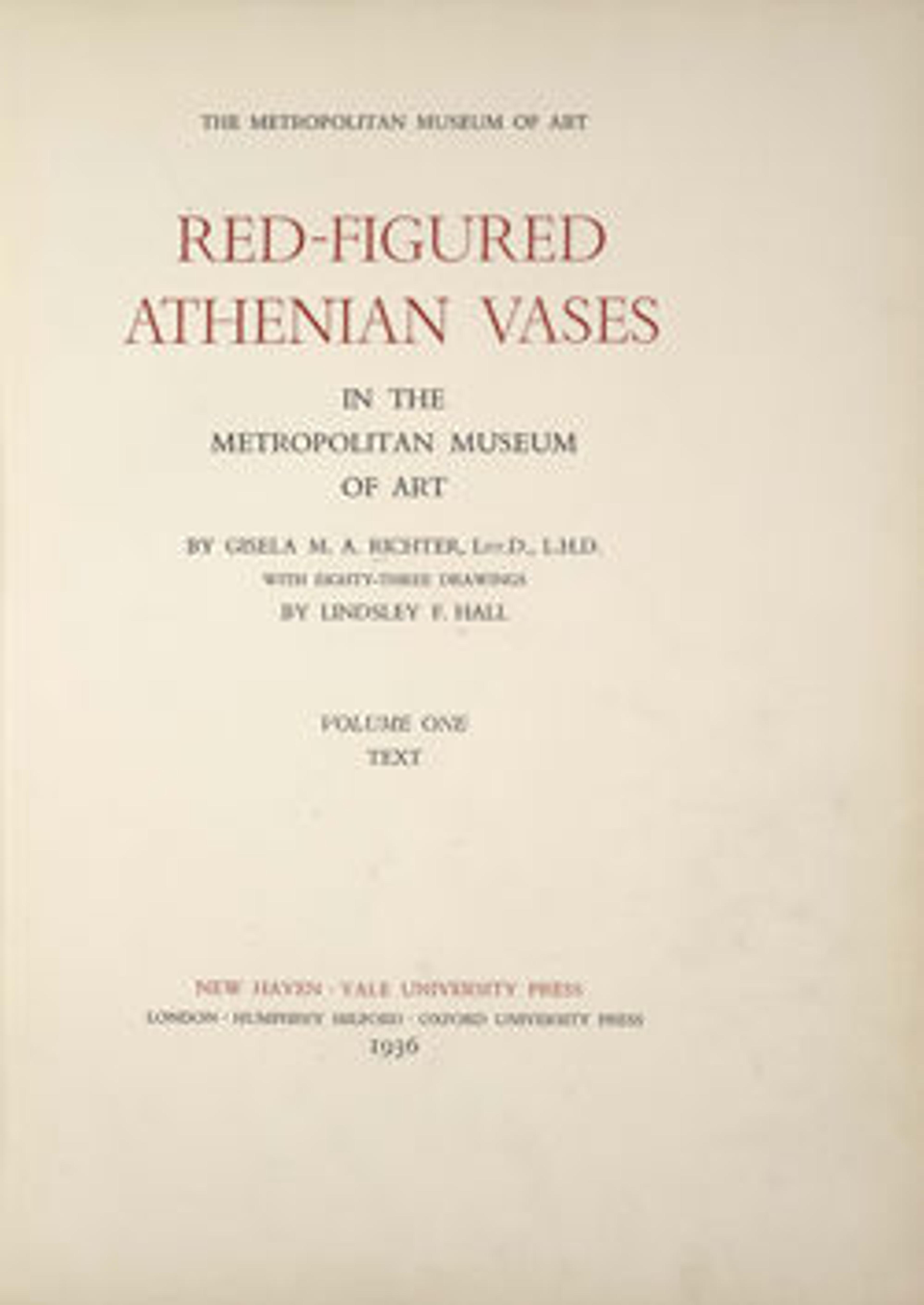Terracotta kylix (drinking cup)
Interior and exterior, schoolboys
Athenian boys received their elementary education at three different places. They could learn to read, write, and do arithmetic at various private establishments. They learned to play the lyre and sing from a lyre master. And they were trained in gymnastics at a palaestra, a public or private exercise ground.
On the inside of this cup, a boy trudges to school carrying a writing tablet, which consists of two wooden leaves coated on one side with wax and tied together. One could scratch into the wax surface with a sharp stylus and then smooth the wax to erase the marks. It has been suggested that the boys on the outside of the cup are playing school. On either side, two students approach a boy who is acting as teacher. Two of the boys have papyrus rolls on which various poetic works could be written.
Athenian boys received their elementary education at three different places. They could learn to read, write, and do arithmetic at various private establishments. They learned to play the lyre and sing from a lyre master. And they were trained in gymnastics at a palaestra, a public or private exercise ground.
On the inside of this cup, a boy trudges to school carrying a writing tablet, which consists of two wooden leaves coated on one side with wax and tied together. One could scratch into the wax surface with a sharp stylus and then smooth the wax to erase the marks. It has been suggested that the boys on the outside of the cup are playing school. On either side, two students approach a boy who is acting as teacher. Two of the boys have papyrus rolls on which various poetic works could be written.
Artwork Details
- Title:Terracotta kylix (drinking cup)
- Artist:Attributed to the Painter of Munich 2660
- Period:Classical
- Date:ca. 460 BCE
- Culture:Greek, Attic
- Medium:Terracotta; red-figure
- Dimensions:H. 2 3/4 in. (7 cm); diameter 7 7/8 in. (20 cm)
- Classification:Vases
- Credit Line:Rogers Fund, 1917
- Object Number:17.230.10
- Curatorial Department: Greek and Roman Art
More Artwork
Research Resources
The Met provides unparalleled resources for research and welcomes an international community of students and scholars. The Met's Open Access API is where creators and researchers can connect to the The Met collection. Open Access data and public domain images are available for unrestricted commercial and noncommercial use without permission or fee.
To request images under copyright and other restrictions, please use this Image Request form.
Feedback
We continue to research and examine historical and cultural context for objects in The Met collection. If you have comments or questions about this object record, please contact us using the form below. The Museum looks forward to receiving your comments.
